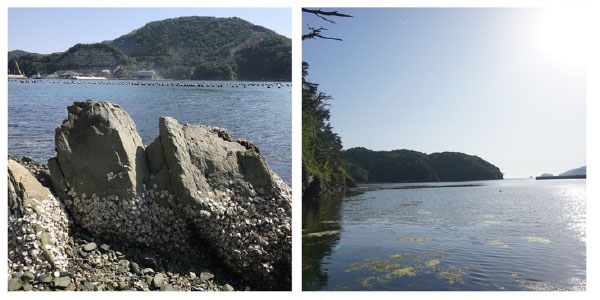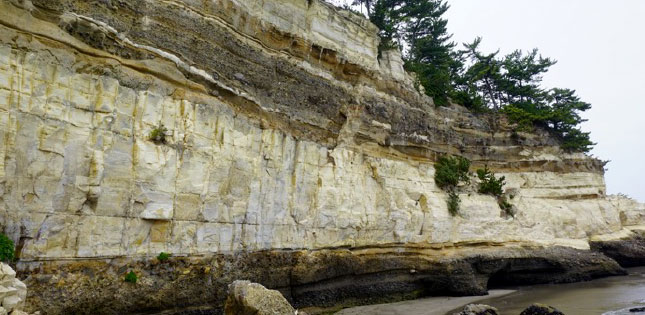The crustal record is the geologist's book for studying the history of the Earth. It contains information to understand important aspects such as when the earliest crustal rocks separated from the mantle; the origin and evolution of life; the inception and development of plate tectonics, oceans, atmosphere and the magnetic field.
Unfortunately, this information is disrupted and fragmented due to growth and recession. Subduction erosion found in Northeast Japan has permanently destroyed crucial pieces of information to understand our planet.
The Japanese Islands are at the juncture between the Pacific and Asian plates which is the locus of continental growth through volcanic activity and is also the site of recycling of the Earth's crust as the Pacific plate dives beneath the Asian continental crust. This process, known as subduction, not only recycles the Pacific oceanic crust, but also causes tectonic erosion as the Pacific plate grinds away the base of the continental crust. The tectonic erosion of the continental crust has been related to the occurrence of megathrust earthquakes.

Rocks in the Northeast of Japan.Ⓒ Daniel Pastor-Galán and Tatsuki Tsujimori
An international research team led by Daniel Pastor-Galán, assistant professor at the Frontier Research Institute for Interdisciplinary Sciences (FRIS) at Tohoku University, and Tatsuki Tsujimori, professor at the Center for Northeast Asian Studies (CNEAS), has defined the events that punctuated the crustal history of Northeast Japan. The study has revealed the main ages of the events that shaped the geological roots of Japan.
The results show a fierce history of periodic magmatic flare-ups; subduction erosion when the Pacific slab destroyed the Japanese continental crust; the complete removal and substitution of the original Japanese crust roughly 270 million years ago; and the total melting of such crust around 110 million years ago.
Understanding the history of subduction, the processes associated with it and the mechanisms operating at the base of the crust are crucial to understanding the history of the continental crust and the trends in potential geohazards. Pastor-Galán says "the study represents a landmark towards understanding the origin and evolution of the geological roots of Japan, and the mechanisms operating at subduction zones in deep time."
- Publication Details:
Title: Evidence for crustal removal, tectonic erosion and flare-ups from the Japanese evolving forearc sediment provenance
Authors: Daniel Pastor-Galán, Christopher J. Spencer, Tan Furukawa, Tatsuki Tsujimori
Journal: Earth and Planetary Science Letters
DOI: 10.1016/j.epsl.2021.116893
Contact:
Daniel Pastor-Galán / Tatsuki Tsujimori
Frontier Research Institute for Interdisciplinary Sciences (FRIS) / Center for Northeast Asian Studies, Tohoku University (CNEAS)
Email: tatsukix tohoku.ac.jp
tohoku.ac.jp
Website: https://www.fris.tohoku.ac.jp/en


